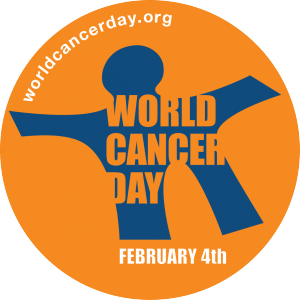World Cancer Day – Reflecting on occupational cancer
World Cancer Day 4 February 2016
Taking place under the tagline ‘We can. I can.’, World Cancer Day 2016-2018 will explore how everyone – as a collective or as individuals – can do their part to reduce the global burden of cancer. World Cancer Day is a chance to reflect on what you can do, make a pledge and take action.
Heather Bryant, VP, Cancer Control, Canadian Partnership Against Cancer, said: “On World Cancer Day, we have an opportunity to collectively examine cancer control strategies to identify winning formulas that will accelerate progress. The goal for all of us is to ensure fewer people develop cancer, more people are successfully treated and that there is a better quality of life for people during treatment and beyond.”
Occupational Cancer
Past occupational exposure to known and probable carcinogens is estimated to account for about 5% of cancer deaths and 4% of cancer registrations currently occurring each year in Great Britain. This equates to about 8,000 cancer deaths and 13,500 new cancer registrations each year.

 Past asbestos exposure is the leading cause of deaths from occupational cancer today. Other major causes of occupational cancer include silica, solar radiation, mineral oils and shift work.
Past asbestos exposure is the leading cause of deaths from occupational cancer today. Other major causes of occupational cancer include silica, solar radiation, mineral oils and shift work.
Many work and non-work related factors can cause cancer. Furthermore, cancer cases often present themselves many years after the relevant exposure took place. Therefore, it is usually difficult to know whether workplace exposures have caused particular cases of cancer. However, it is possible to estimate in a large population the approximate number of cancer cases that could be due to work, in other words, would not have occurred in the absence of workplace exposure.
Key points:
- Occupational cancer may occur as a result of work involving direct exposure to a carcinogen or exposure to a carcinogen produced as part of a work process
- There is usually a considerable amount of time (usually more than 10 years) between exposure to a carcinogen and the onset of any ill-health symptoms
- Carcinogens occur in many forms, they can be solids, liquids, vapours, gases, or dusts and can be breathed in, absorbed through the skin or swallowed.
- The construction industry has the largest estimate of occupational cancer cases, with 3,500 cancer deaths and 5,500 cancer registrations each year from this industry.
- Exposure to silica, Diesel Engine Exhaust, solar radiation, shift work and working as painters and welders might become the main causes of occupational cancer in the future, according to estimates.
Information and resources
www.worldcancerday.org
Visit the CancerHelp UK website for more information on cancer and its causes.
To find out more about the types of occupational cancers, signs and symptoms visit the IOSH website.
To help raise awareness about occupational cancer visit IOSH’s No Time to Lose website and download free resources.
[vc_row][vc_column width="2/3"][vc_column_text]
What makes us susceptible to burnout?
In this episode of the Safety & Health Podcast, ‘Burnout, stress and being human’, Heather Beach is joined by Stacy Thomson to discuss burnout, perfectionism and how to deal with burnout as an individual, as management and as an organisation.We provide an insight on how to tackle burnout and why mental health is such a taboo subject, particularly in the workplace.[/vc_column_text][/vc_column][vc_column width="1/3"][vc_single_image image="70883" img_size="medium" onclick="custom_link" link="https://www.shponline.co.uk/working-at-height-3/barbour-download-guide-to-working-at-height/"][/vc_column][/vc_row][vc_row][vc_column][vc_btn title="Listen now!" color="success" link="url:https%3A%2F%2Fwww.shponline.co.uk%2Fpodcasts%2Fwhat-makes-us-susceptible-to-burnout%2F|target:_blank"][/vc_column][/vc_row]
World Cancer Day – Reflecting on occupational cancer
World Cancer Day 4 February 2016 Taking place under the tagline ‘We can. I can.’, World Cancer Day 2016-2018 will
Lauren Applebey
SHP - Health and Safety News, Legislation, PPE, CPD and Resources Related Topics
Workers facing uncertain future coupled with health and safety risks, new IOSH report says
The London Health & Safety Group – over 80 years old and still going strong
New IOSH study centre aims to support Level 6 Diploma
